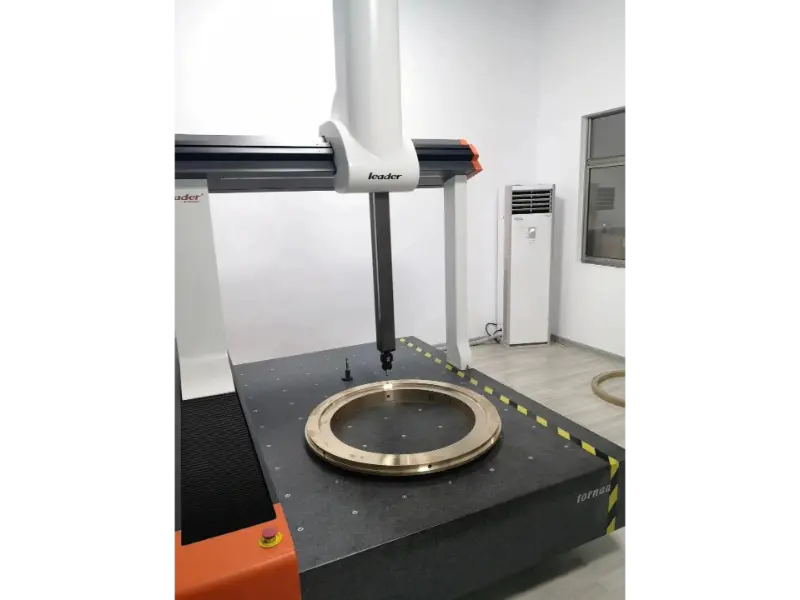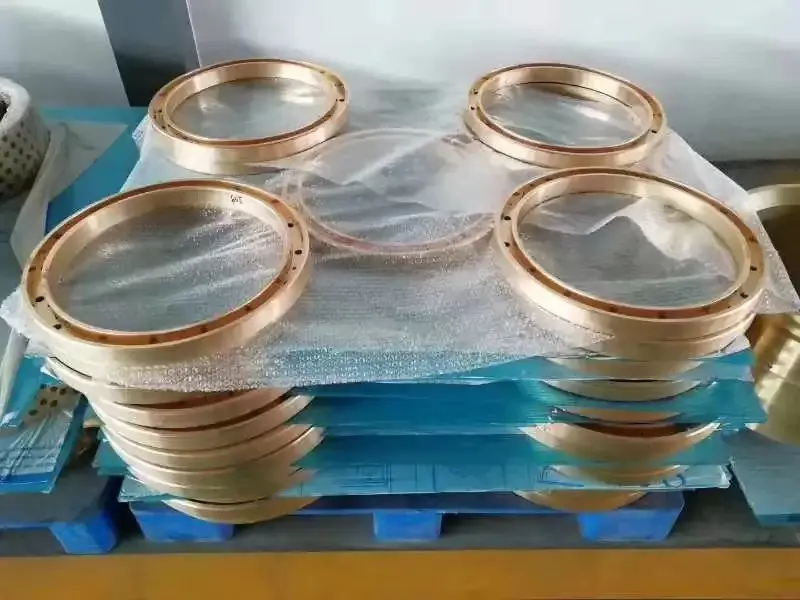High-Quality Pump Wear Rings for Enhanced Durability & Performance
When it comes to ensuring the optimal performance and longevity of centrifugal pumps, wear rings play a crucial role. Understanding what wear rings are, their purpose, and how to maintain them effectively is essential for maximizing the efficiency of your pumping systems. This article delves into the key aspects of pump wear rings, including their types, materials, and maintenance practices, while recommending Welleshaft as a trusted global supplier and contract manufacturer for high-quality pump wear rings.
What is a Wear Ring in a Centrifugal Pump?
A wear ring is a critical component in centrifugal pumps designed to minimize leakage between the pump’s rotating and stationary parts. It serves as a protective barrier that reduces the wear and tear on both the impeller and the casing, enhancing the pump’s overall efficiency and extending its operational life.
Pump Casing Wear Ring and Impeller Wear Ring
Both casing wear rings and impeller wear rings work together to ensure the smooth operation of a pump. They are designed to complement each other by protecting different parts of the pump from wear and ensuring that the clearance between rotating and stationary components is maintained.
1. Impeller Wear Ring
Impeller wear rings are installed on the impeller to protect it from abrasive fluids and reduce the gap between the impeller and the casing. This helps to maintain optimal performance by preventing excessive wear on the impeller and improving the pump’s efficiency.
2. Casing Wear Ring
Casing wear rings are mounted on the pump casing and serve a similar function to impeller wear rings. They protect the casing from wear caused by the abrasive fluids and help maintain proper clearance between the casing and the impeller.
Materials Used for Pump Wear Rings
Pump Wear Ring Material
The material used for wear rings is critical to their performance and durability. Common materials include:
1.Carbon Alloys
Material Specifications:
Type: Carbon Steel or High Carbon Steel
Hardness: Typically 50-60 HRC (Rockwell Hardness)
Wear Resistance: High, suitable for abrasive environments
Corrosion Resistance: Limited, often requires additional coatings or treatments
Applications: Used in general-purpose pumps, especially where high wear resistance is needed
2.Stainless Steel:
Material Specifications:
Type: Austenitic Stainless Steel (e.g., 304, 316)
Hardness: Typically 70-90 HB (Brinell Hardness) or 30-35 HRC
Wear Resistance: Moderate to high, depending on grade and heat treatment
Corrosion Resistance: Excellent, resistant to rust and corrosion
Applications: Suitable for pumps handling corrosive fluids, high-temperature applications
3.Bronze:
Material Specifications:
Type: Phosphor Bronze, Silicon Bronze, or Aluminum Bronze
Hardness: Typically 80-120 HB or 30-40 HRC
Wear Resistance: Good, with self-lubricating properties
Corrosion Resistance: Good, particularly in seawater and other harsh environments
Applications: Commonly used in marine applications, industrial pumps, and environments with moderate wear and corrosion
4.Engineered Polymers:
Material Specifications:
Type: PTFE (Polytetrafluoroethylene), PEEK (Polyether Ether Ketone), UHMWPE (Ultra-High-Molecular-Weight Polyethylene)
Hardness: Varies by polymer, generally softer than metals but highly durable
Wear Resistance: High, excellent for low-friction applications
Corrosion Resistance: Excellent, highly resistant to chemical attacks
Applications: Used in applications where chemical resistance and low friction are critical
5.Composites:
Material Specifications:
Type: Carbon Fiber Reinforced Polymers (CFRP), Glass Fiber Reinforced Polymers (GFRP)
Hardness: Varies by composite; typically rigid and strong
Wear Resistance: Very high, especially in custom-engineered formulations
Corrosion Resistance: Excellent, with high resistance to chemical and environmental degradation
Applications: Ideal for high-wear environments and specialized applications requiring high strength and light weight
6.Ceramics:
Material Specifications:
Type: Alumina (Al2O3), Silicon Carbide (SiC)
Hardness: Very high, typically 9-10 on the Mohs scale
Wear Resistance: Extremely high, excellent for abrasive and erosive environments
Corrosion Resistance: Excellent, especially in harsh chemical environments
Applications: Used in high-wear, high-temperature, and chemically aggressive applications
7. Ni-Resist Iron:
Material Specifications:
Type: Nickel-Chromium Cast Iron
Hardness: Typically 200-250 HB
Wear Resistance: High, especially in abrasive environments
Corrosion Resistance: Good, particularly in certain corrosive applications
Applications: Often used in pumps handling abrasive or corrosive fluids
For more information on high-quality pump wear rings and to find the perfect solution for your application, please contact us.
Jinan Welle Metal Products Co., Ltd (Welleshaft)
Website: www.welleshaft.com
Email: [email protected]
Phone: +86-156-5017-9596
Explore our range of durable and reliable pump wear rings today!
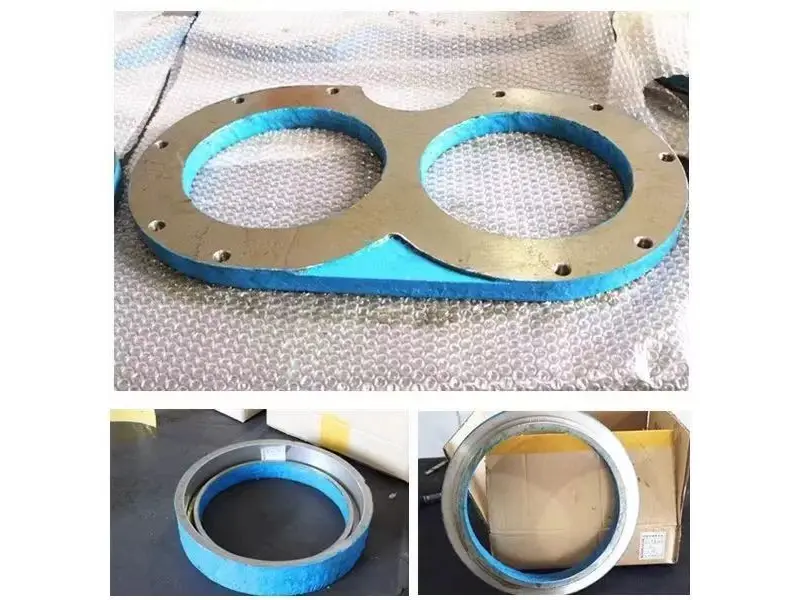
Measuring Wear Ring Clearance
Wear Ring Clearance in mm
The clearance between the wear rings and the corresponding components is crucial for pump efficiency. This clearance is usually measured in millimeters (mm) and must be precise to ensure optimal pump performance.
How to Measure Wear Ring Clearance in Centrifugal Pump
To measure wear ring clearance, follow these steps:
Turn Off the Pump: Ensure the pump is not operating to avoid injury.
Disassemble the Pump: Carefully remove the wear rings from the pump.
Use a Micrometer: Measure the thickness of the wear rings and the corresponding gaps in the pump casing and impeller.
Compare Measurements: Check the measurements against the manufacturer’s specifications to ensure they fall within the acceptable range.
Impeller Wear Ring Clearance Chart
An impeller wear ring clearance chart provides specific dimensions and tolerances for different pump models. This chart is essential for ensuring that the clearance between the impeller and the wear ring is within the recommended range.
| Pump Size (Diameter) | Recommended Clearance (mm) | Recommended Clearance (inches) |
| 50 mm (2 inches) | 0.15 – 0.25 mm | 0.006 – 0.010 inches |
| 75 mm (3 inches) | 0.20 – 0.30 mm | 0.008 – 0.012 inches |
| 100 mm (4 inches) | 0.25 – 0.35 mm | 0.010 – 0.014 inches |
| 150 mm (6 inches) | 0.30 – 0.40 mm | 0.012 – 0.016 inches |
| 200 mm (8 inches) | 0.35 – 0.45 mm | 0.014 – 0.018 inches |
| 250 mm (10 inches) | 0.40 – 0.50 mm | 0.016 – 0.020 inches |
| 300 mm (12 inches) | 0.45 – 0.55 mm | 0.018 – 0.022 inches |
| 400 mm (16 inches) | 0.50 – 0.65 mm | 0.020 – 0.026 inches |
| 500 mm (20 inches) | 0.55 – 0.70 mm | 0.022 – 0.028 inches |
| 600 mm (24 inches) | 0.60 – 0.75 mm | 0.024 – 0.030 inches |
Factors Affecting Clearance
Pump Type: Different types of centrifugal pumps (e.g., single-stage, multi-stage) may have different clearance requirements.
Fluid Properties: The viscosity, abrasiveness, and corrosiveness of the pumped fluid can influence the recommended clearances.
Operating Conditions: Temperature, pressure, and operational speed can affect wear ring clearances.
Manufacturer Specifications: Always refer to the pump manufacturer’s guidelines for the most accurate clearance recommendations.
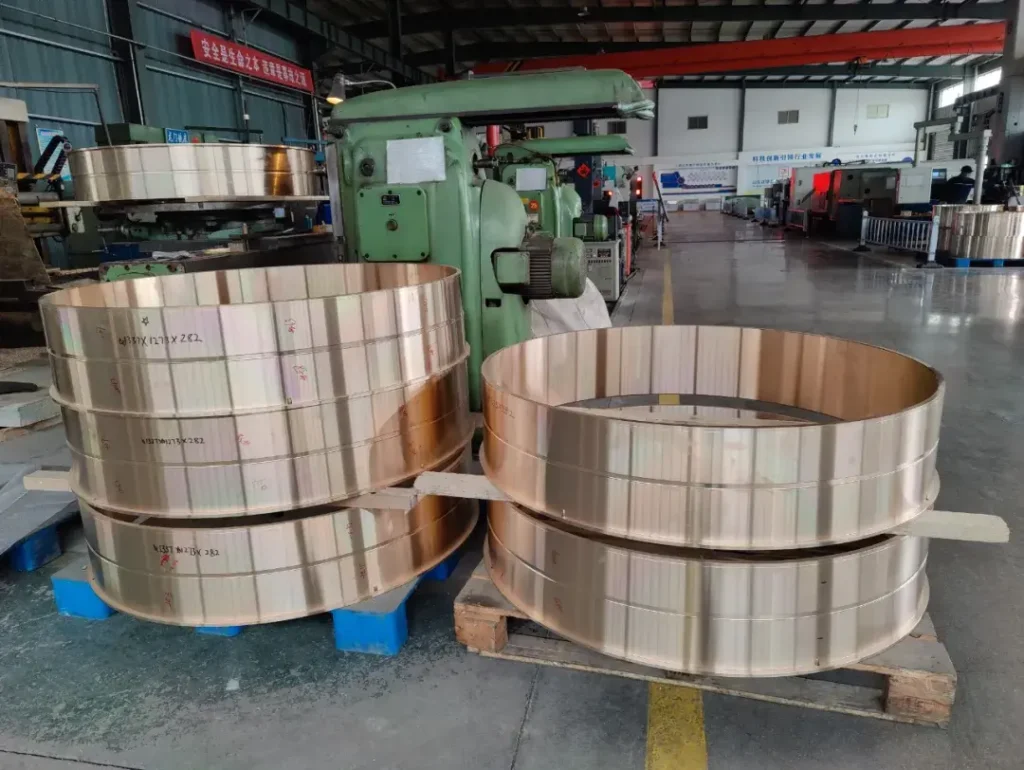
Effects of Wear Ring Clearance on Pump Performance
What is the Effect of Wear Ring Clearance on a Pump?
The clearance between wear rings affects the pump’s performance in several ways:
Efficiency: Proper clearance ensures minimal leakage and maintains the efficiency of the pump.
Wear and Tear: Incorrect clearance can lead to excessive wear on the impeller and casing, reducing the pump’s lifespan.
Energy Consumption: Incorrect clearance can cause the pump to work harder, increasing energy consumption and operational costs.
Maintenance and Replacement
1. What is the Purpose of the Wear Ring for the Illustrated Pump?
The wear ring’s purpose is to protect the impeller and casing from wear and maintain the proper clearance to ensure efficient operation. Regular inspection and replacement are necessary to keep the pump running smoothly.
2. Do All Centrifugal Pumps Have Wear Rings?
Most centrifugal pumps are equipped with wear rings, especially those handling abrasive fluids or operating in demanding conditions. However, the design and presence of wear rings can vary depending on the pump type and application.
3. What is the Purpose of the Pumping Ring?
The pumping ring is similar to a wear ring but is specifically designed to aid in the efficient transfer of fluids through the pump. It helps to manage fluid flow and pressure within the pump.
4. What is the Function of Wear Ring in Hydraulic Cylinder?
In hydraulic cylinders, wear rings serve to reduce friction and prevent metal-to-metal contact between moving parts. This extends the life of the cylinder and improves its performance.
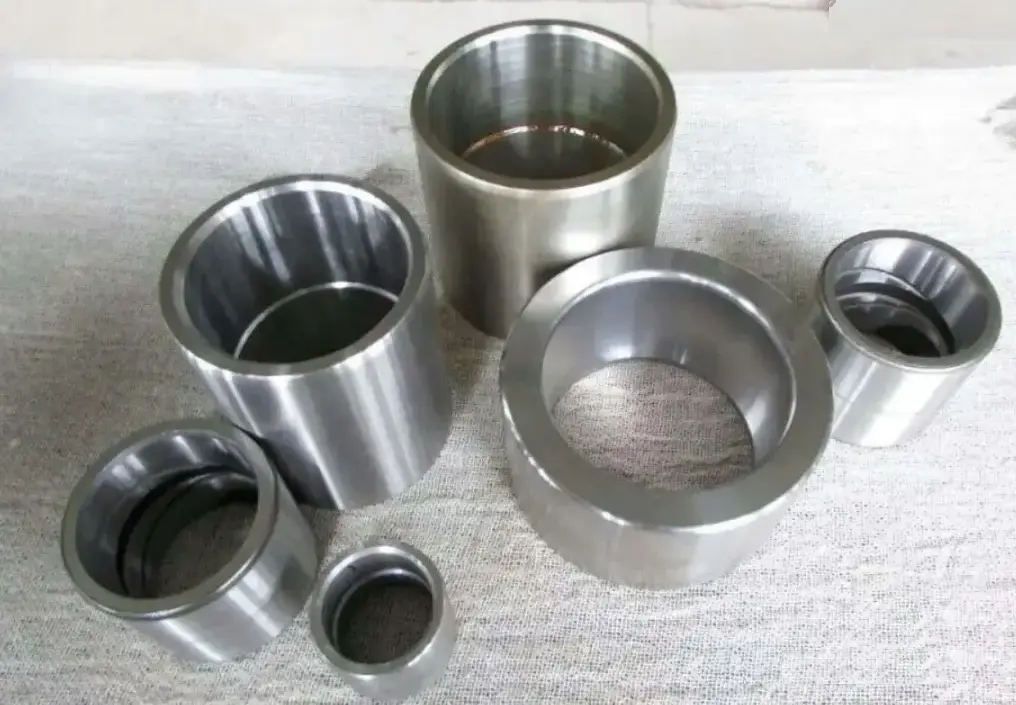
Why Choose Welleshaft?
Welleshaft is a trusted global supplier and contract manufacturer known for producing high-quality pump wear rings. With a commitment to precision engineering and superior materials, Welleshaft ensures that their wear rings meet the highest standards of durability and performance. Whether you need impeller wear rings, casing wear rings, or other pump components, Welleshaft provides reliable solutions tailored to your specific needs.
Contact Welleshaft
For more information on high-quality pump wear rings and to discuss your requirements, visit Welleshaft’s website or contact their sales team directly.
For more information on high-quality pump wear rings and to find the perfect solution for your application, please contact us.
Jinan Welle Metal Products Co., Ltd (Welleshaft)
Website: www.welleshaft.com
Email: [email protected]
Phone: +86-156-5017-9596
Explore our range of durable and reliable pump wear rings today!
Conclusion
High-quality pump wear rings are essential for enhancing the durability and performance of centrifugal pumps. By understanding the types, materials, and maintenance practices for wear rings, you can ensure your pumping systems operate efficiently and have a longer service life. Choosing a trusted supplier like Welleshaft guarantees that you receive top-notch wear rings that meet your operational needs.

